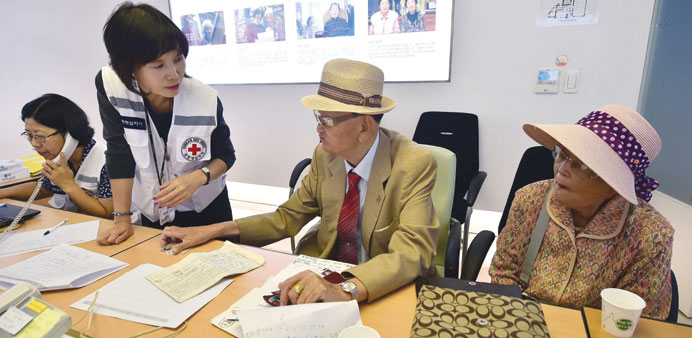Reuters/Vienna
North Korea appears to be renovating and building facilities at its Yongbyon nuclear site, a central element of its atomic weapons programme, the UN nuclear agency’s head said yesterday.
A report by the Washington-based Institute for Science and International Security (ISIS) in April said satellite images showed that activity at the site’s main nuclear reactor may have resumed after a shutdown.
North Korea, which is believed to have carried out nuclear tests in 2006, 2009 and 2013, has not granted IAEA inspectors access to its facilities since 2009, reducing the agency to monitoring its nuclear activities from outside the country.
“We have observed renovation and construction activities at various locations within the site,” IAEA director general Yukiya Amano told a closed-door meeting of his agency’s board of governors in Vienna, according to a text of his speech.
“These appear to be broadly consistent with the DPRK’s statements that it is further developing its nuclear capabilities,” he said, referring to North Korea’s official name, the Democratic People’s Republic of Korea.
Although North and South Korea recently averted a full-scale military confrontation and agreed to improve ties after a rare exchange of artillery fire over their heavily fortified border, tensions on the Korean Peninsula remain high.
China, North Korea’s closest ally, called on Wednesday for a resumption of talks over Pyongyang’s nuclear programme.
The so-called six-party talks — between China, the United States, Japan, Russia and the two Koreas — were last held more than six years ago despite numerous efforts to restart them.
The ISIS report in April said the main reactor at Yongbyon may be operating again at low power or intermittently, and that a centrifuge plant, a facility for the enrichment of uranium, had operated. It also said renovations might be imminent.
Amano did not say where within the Yongbyon site the renovation and construction activities were being carried out.
“We continue to monitor developments at the Yongbyon site, mainly through satellite imagery,” Amano said.
China’s foreign ministry declined to say yesterday whether president Xi Jinping had held talks with a senior North Korean official visiting for a military parade last week, underscoring the parlous relations between the two supposed friends.
Choe Ryong Hae, secretary of the central committee of North Korea’s Workers’ Party, was in Beijing to attend the parade marking 70 years since the end of World War Two in Asia. Choe is close to North Korean leader Kim Jong Un.
Xi did, however, hold a high profile meeting with South Korean president Park Geun-hye, in Beijing for the same event.
“President Park Geun-hye and secretary Choe Ryong Hae were both guests invited by China, and both received warm and friendly treatment from China,” ministry spokesman Hong Lei said, when asked if Xi and Choe met aside from when Xi greeted foreign guests at the beginning of the parade.
“China is dedicated to developing a friendly cooperative relationship with both North Korea and South Korea,” he said.
Asked whether the lack of a meeting between Xi and Choe showed China’s unhappiness with its old ally North Korea, Hong said: “As for your supposition, this is incorrect”.
He did not elaborate.
Chinese media said Choe and his delegation left for home the same day they arrived.
Park’s sixth summit meeting with Xi highlighted the growing ties between China and US ally South Korea, as China has become increasingly frustrated with North Korea, in particular its nuclear ambitions, its rejection of talks and its threats to unleash war on its enemies.
Despite the frustration, China remains North Korea’s sole significant backer.
China wants previous agreements reached during so-called six-party talks with North Korea - which include the United States, Japan, Russia and South Korea - to be fulfilled, along with relevant UN resolutions.
Numerous efforts to restart the talks since they were last held more than six years ago have failed.
China, North Korea’s sole major ally, backed it in the 1950-53 Korean War, with late leader Mao Zedong’s eldest son dying in the conflict with the South and its allies.
China, the world’s largest exporter, is now South Korea’s biggest trading partner. South Korea is one of the few developed countries that runs a surplus with China.

South Korean officials help elderly people with reunion documents.
